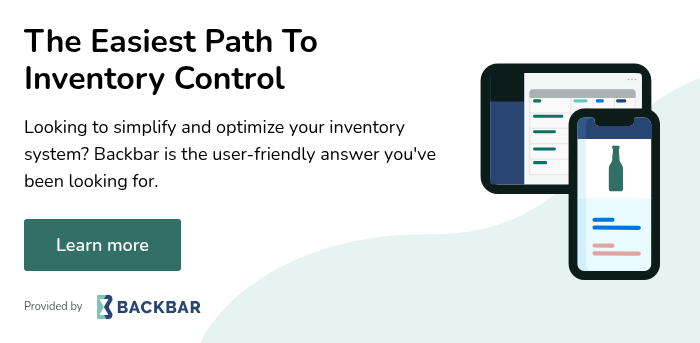Attracting and retaining customers is paramount for the success of any bar or restaurant. A loyalty program can be a game-changer in this regard, offering a win-win situation for both the establishment and its patrons. But how does one go about starting a loyalty program that truly stands out? In this blog, we will delve into the intricacies of creating a successful loyalty program for bars and restaurants.
From identifying target customers to designing enticing rewards, we will explore every aspect to help you launch a program that not only fosters customer loyalty but also drives increased revenue for your business. So, whether you're a new establishment looking to make a mark or an existing one seeking to revamp your customer retention strategy, this blog is your ultimate guide to kick-starting a loyalty program that will leave a lasting impression on your customers.
Why Should a Restaurant Offer a Loyalty Program?
Discover the benefits and potential drawbacks of implementing a loyalty program at your restaurant.
In today's competitive restaurant industry, offering a loyalty program can be a powerful tool to attract and retain customers. Here are three key advantages of implementing a loyalty program at your restaurant:
1. Increased customer retention: A loyalty program incentivizes customers to choose your restaurant over competitors by offering rewards and exclusive benefits. By nurturing customer loyalty, you can increase the likelihood of repeat visits, resulting in higher customer retention rates.
2. Enhanced customer engagement: Loyalty programs provide a platform for ongoing communication with your customers. By collecting valuable data on their preferences and dining habits, you can personalize offers and promotions to meet their needs better. This personalized approach fosters a deeper connection with your customers and encourages them to engage with your restaurant both online and offline.
3. Positive word-of-mouth marketing: A well-designed loyalty program can turn your satisfied customers into brand advocates. When customers feel valued and rewarded for their loyalty, they are more likely to recommend your restaurant to others. This word-of-mouth marketing can significantly boost your restaurant's reputation and attract new customers.
Despite the numerous benefits, it is essential to consider potential drawbacks when implementing a loyalty program:
1. Financial costs: Running a loyalty program requires investment in terms of rewards, discounts, and operational expenses. It is important to carefully assess the financial feasibility of implementing a loyalty program and ensure that the benefits outweigh the costs.
2. Complexity and management: Developing and managing a successful loyalty program can be complex. From designing the program structure to tracking customer participation and redemption, it requires dedicated resources and effective management to ensure seamless operations.
3. Potential for abuse: In some cases, customers may exploit the program by solely focusing on earning rewards rather than genuine loyalty. This can lead to increased costs and diminished profitability if not managed effectively. Implementing clear terms and conditions and monitoring program participation can help mitigate this risk.
By weighing the pros and cons, you can make an informed decision about whether implementing a loyalty program aligns with your restaurant's goals and resources.
@brandonlong2020 Gotna restaurant? How to build a loyalty program. #smallbusiness #growthhacks #onlinemarketing #digitalmarketing
♬ original sound - Brandon Long
5 Steps to Set Up Your Restaurant Loyalty Program
Now that we understand the benefits and potential drawbacks of implementing a loyalty program at your restaurant, let's dive into the five essential steps to set up an effective and successful program.
Step 1: Define your objectives and target customers
Before launching a loyalty program, it's crucial to identify your objectives and target customers. Determine what you want to achieve with the program, whether it's increasing customer retention, driving sales during slow periods, or attracting new customers. Once you have a clear understanding of your goals, define your target customers. Consider their demographics, preferences, and behaviors to tailor your program accordingly.
Step 2: Design enticing rewards and incentives
The heart of any loyalty program lies in its rewards and incentives. Create a range of rewards that appeal to your target customers and reflect the value they bring to your business. These rewards can include discounts on future purchases, free appetizers or desserts, exclusive access to events or promotions, or even personalized gifts. The key is to make the rewards enticing enough to keep customers coming back for more.
Step 3: Choose the right technology and software
Implementing a loyalty program requires the right technology and software to ensure seamless operations and efficient management. Look for a loyalty program provider that offers a user-friendly platform for both customers and staff. The software should allow easy enrollment, track customer participation, and enable hassle-free reward redemption. Additionally, consider integrating the program with your existing POS system to streamline operations further.
Step 4: Promote your loyalty program
To maximize the success of your loyalty program, you need to promote it effectively. Utilize various marketing channels such as social media, email newsletters, and in-store signage to create awareness and generate excitement. Highlight the benefits and rewards of the program, emphasizing how it will enhance the overall dining experience for your customers. Consider offering a sign-up bonus or referral incentives to incentivize new customers to join.
Step 5: Monitor and analyze program performance
Once your loyalty program is up and running, it's essential to monitor and analyze its performance regularly. Keep track of key metrics such as customer enrollment, participation rates, redemption frequency, and revenue generated from loyalty members. Analyzing this data will provide valuable insights into the program's effectiveness and allow you to make necessary adjustments or improvements to maximize its impact.
By following these five steps, you can set up a restaurant loyalty program that not only attracts and retains customers but also drives increased revenue for your business. Remember, a well-designed and well-executed loyalty program can be a game-changer in the competitive restaurant industry, helping you build lasting relationships with your customers and establish your brand as a go-to dining destination.
%20BLANK%20(2).jpg?height=400&name=Blog%20Header%20(smaller)%20BLANK%20(2).jpg)


